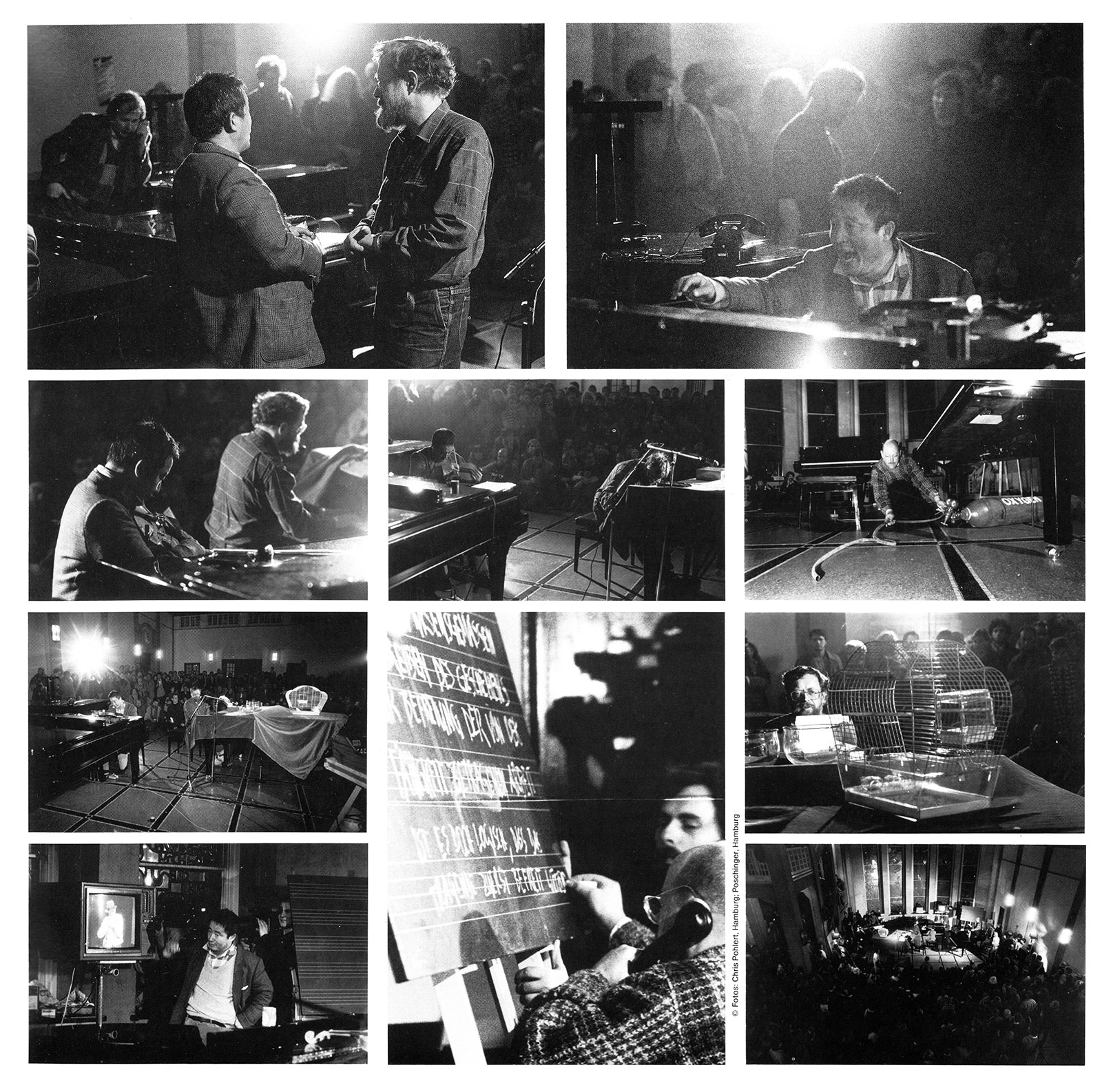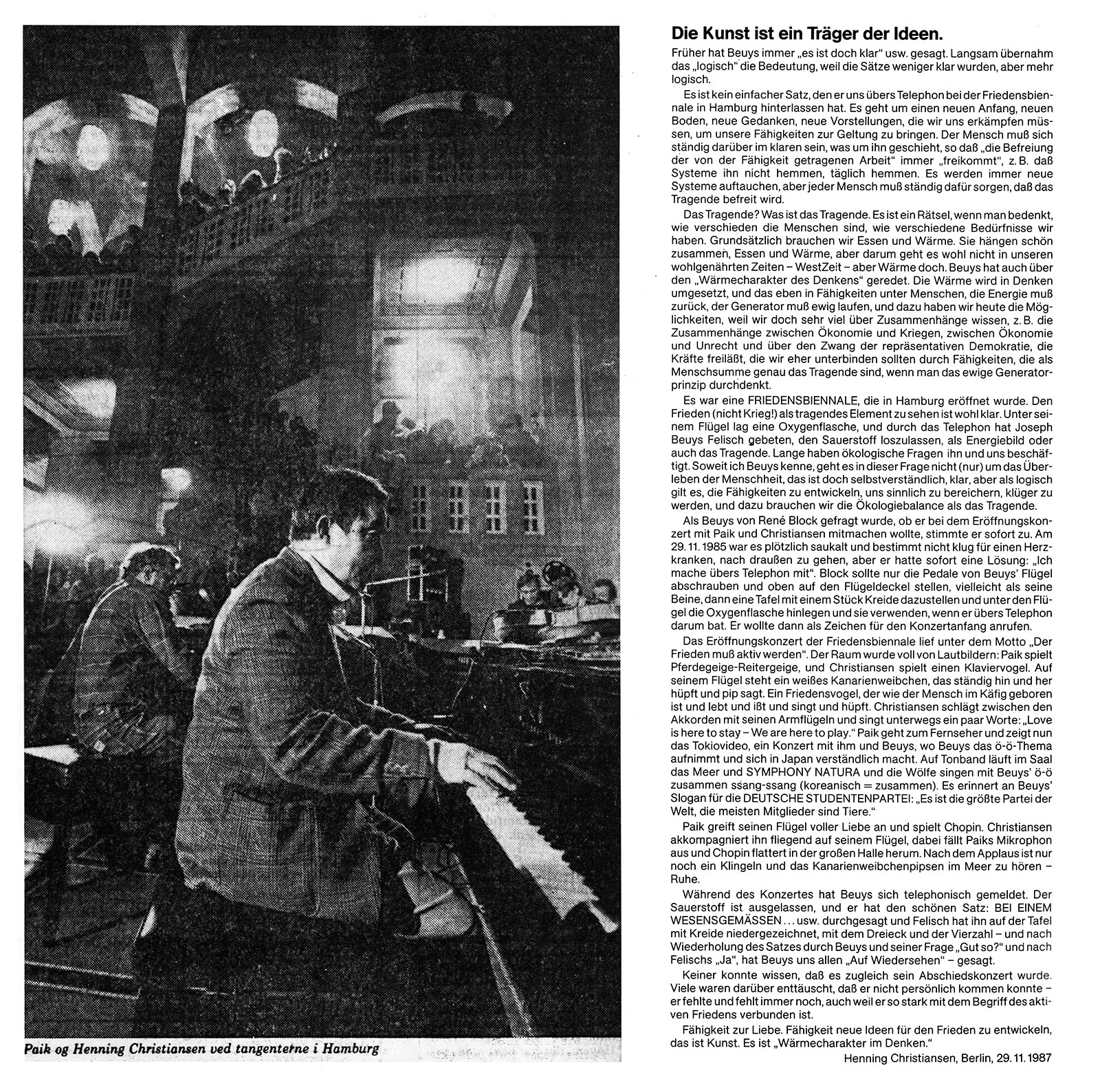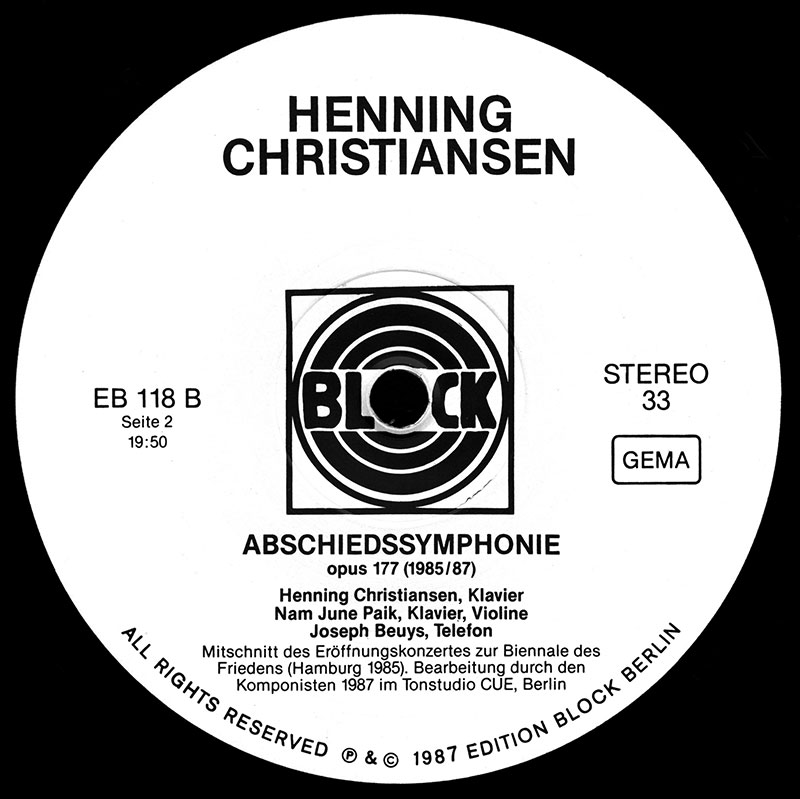Art is a carrier of ideas.
Berlin, 29.11.1987
Beuys used to say “it is obvious,” and so on. Slowly the “logical” took over the meaning, because the sentences became less clear, but more logical.
It is not a simple sentence that he left us over the telephone at the Friedensbiennale in Hamburg. It’s about a new beginning, new ground, new thoughts, new imaginings that we need to fight to bring our skills to bear. The human must always be aware of what is happening around him, what happens around him, so that “the liberation of the work carried on by the faculty” is always “free”, e.g. that systems do not inhibit it, inhibit it daily. There will always be new systems, but every human being must constantly ensure that the wearer is liberated.
The wearer? What is the wearer. It’s a mystery, considering how different people are, how different needs we have. Basically we need food and warmth. They belong together nicely, food and warmth, but that’s not what it’s all about in our well-fed times - WestTime - but warmth nevertheless. Beuys has talked about the “character of warmth in thought”. The heat is transformed into thinking, and that into human capacities, the energy has to go back, the generator has to run forever, and today we have the possibilities, because we know a great deal about relationships, e.g. the connections between economics and wars, between economics and injustice, and the compulsion of representative democracy, which releases forces which we ought rather to suppress by abilities, which, as the sum of souls, are just the bearer, if we think through the eternal generator principle.
It was a PEACE BIENNALE, which was opened in Hamburg. To see the peace (not war!) As a supporting element is probably clear. Under his piano lay an oxygen bottle, and through the phone Joseph Beuys asked Felisch to release the oxygen, as an energy image or as something supporting. Ecological issues have long occupied him and us. As far as I know Beuys, this question is not (only) about the survival of mankind, that is self-evident, of course, but it is logical to develop the abilities, to enrich ourselves, to become wiser, and for this we need the ecological balance as foundation.
When Beuys was asked by René Block if he wanted to participate in the opening concert with Paik and Christiansen, he immediately agreed. On 29.11.1985, it was suddenly very cold and certainly not wise for a heart condition, to go outside, but he immediately had a solution: “I’ll join over the telephone.” Block should only unscrew the pedals from Beuys’ piano and place it on top of the piano cover, maybe as its legs, then place a board with a piece of chalk next to it, and place an oxygen bottle under the piano, to be used when he asks for it over the phone. He would then call to signal the beginning of the concert.
The opening concert of the Peace Biennial ran under the motto “Peace must be active.” The room was full of phonetic images: Paik plays the horse head fiddle and Christiansen plays a piano bird. On his piano is a white canary female, who is constantly hopping and peeping. A bird of peace born like a human in a cage and lives and eats and sings and jumps. Christiansen flaps between the chords with his arm wings and sings a few words on the way: “Love is here to stay.” Paik goes to the TV and now shows the Tokiovideo, a concert with him and Beuys, where Beuys records the ‘ö-ö’ theme and makes himself understood in Japan. On tape in the hall runs the sound of the sea and the SYMPHONY NATURA and the wolves sing together with Beuys ‘ö-ö ssang-ssang’ (Korean = together). It is reminiscent of Beuys’ slogan for the GERMAN STUDENT PARTY: “It is the largest party in the world, most members are animals.”
Paik attacks his piano with love and plays Chopin. Christiansen accompanies him flying on his piano, while Paik’s microphone falls out and Chopin flutters around in the great hall. After the applause, only a ringing and the female canary singing to the sound of the sea is to hear - peace.
During the concert, Beuys answered by phone. The oxygen is released, and he has said the beautiful phrase, “BEI EINEM ‘WESENSGEMÄSSEN’ …, etc., and Felisch has chalked this down on the blackboard, with the triangle and the tetrad - and after repeating the sentence by Beuys and his question “OK then?” and after Felisch’s “yes,” Beuys has said goodbye to all of us.
Nobody could know that it was his farewell concert at the same time. Many were disappointed that he could not come in person - he was still missing and still lacking, partly because he was so strongly associated with the notion of active peace.
Ability to love. Ability to develop new ideas for peace is art. It’s having “warmth of character in thinking.”





